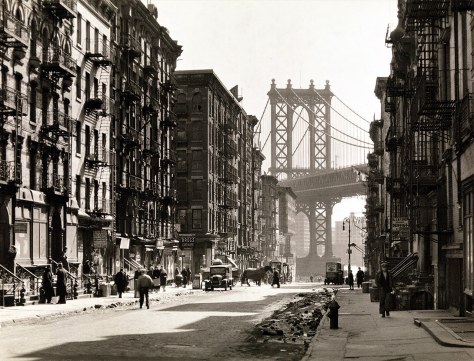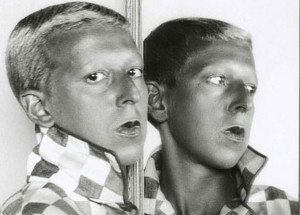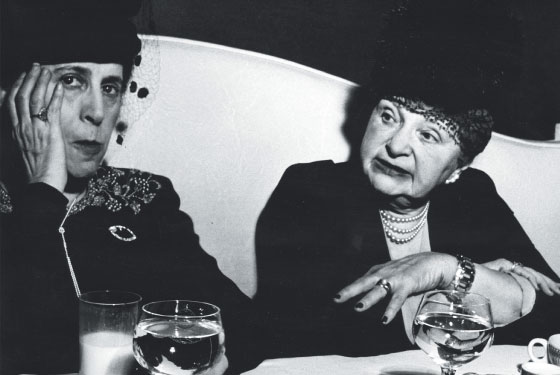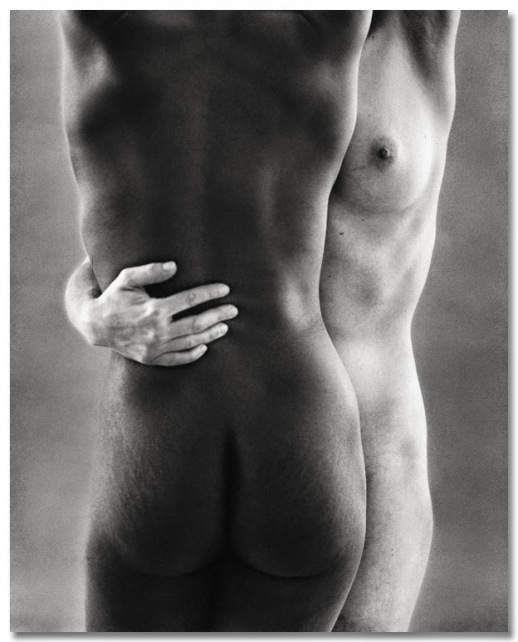Part 2: The Photographers
Fifteen female photographers who have helped to shape the way we see the world.
 Julia Margaret Cameron (1815-1879) A British photographer known for her painterly, softly blurred portraits. She began taking pictures when whe was 48 years old and within a year became a member of the Photographic Societies of London and Scotland. She wrote, “I longed to arrest all the beauty that came before me and at length the longing has been satisfied.”
Julia Margaret Cameron (1815-1879) A British photographer known for her painterly, softly blurred portraits. She began taking pictures when whe was 48 years old and within a year became a member of the Photographic Societies of London and Scotland. She wrote, “I longed to arrest all the beauty that came before me and at length the longing has been satisfied.”
Margaret Bourke White (1904-1971) Born in the Bronx, Bourke-White went on to travel the world. She was the first woman to work as a war photojournalist, the first female photographer for Life magazine, and the first photographer to be permitted to take pictures of Soviet industry. She photographed Buchenwald concentration camp, Gandhi at his spinning Wheel, and Joseph Stalin with a smile.

 Helen Levitt (1913-2009) Helen Levitt has been called “the most celebrated and least known photographer of her time.” She grew up in Brooklyn, and she bought a Leica to document the chalk drawings that children made around the city. She worked as a cinematographer, working with James Agee and Janice Loeb on two documentaries, but it was as a street photographer that she was best known.
Helen Levitt (1913-2009) Helen Levitt has been called “the most celebrated and least known photographer of her time.” She grew up in Brooklyn, and she bought a Leica to document the chalk drawings that children made around the city. She worked as a cinematographer, working with James Agee and Janice Loeb on two documentaries, but it was as a street photographer that she was best known.
Tina Modotti (1896-1942) Modotti was born in Italy, but moved to San Franciso at the age of 16. She moved to LA to play the femme fatale in a few silent movies and joined a bohemian circle of friends that included Edward Weston. She became Weston’s lover and student, and traveled with him to Mexico City, where they spent time with Frida Kahlo and Diego Rivera, and where Modotti photographed Rivera’s murals as well as portraits of peasants and workers. Modotti became increasingly politically motivated and devoted more time to anti-fascist politics than photography.

 Imogen Cunningham (1883-1976) Cunningham was raised in Seattle, Washington, and she combined a fascination with photography with an interest in Chemistry. She studied the science behind photography, and helped to pay for her schooling by photographing plants for the botany department. She opened a portrait studio, and became known for her pictorial work.
Imogen Cunningham (1883-1976) Cunningham was raised in Seattle, Washington, and she combined a fascination with photography with an interest in Chemistry. She studied the science behind photography, and helped to pay for her schooling by photographing plants for the botany department. She opened a portrait studio, and became known for her pictorial work.
Anna Atkins (1799-1871) An English botanist and photographer, it is believed that Atkins might have been the first woman to create a photograph, and the first person of either sex to publish a book illustrated with photographs. She became friends with Henry Fox Talbot, and learned about his photogenic drawing technique. A mutual friend invented the cyanotype, and Atkins used this process to make photograms of algae and other plants.

Berenice Abbot (1898-1991) At the age of 20, in 1918, Abbott moved to Greenwich Village in New York, where she was “adopted” by anarchist Hippolyte Havel, and lived with Djuna Barnes, Kenneth Burke and Malcolm Cowley. She traveled to Paris in 1921, and discovered photography when she became the darkroom assistant of Man Ray. She wrote “I took to photography like a duck to water. I never wanted to do anything else.” She took portraits of the artistic celebrities of the Parisien literary and artistic scene, and having a portrait taken by Abbott was a sign that you had made it. In 1925 Man Ray introduced her to Eugene Atget’s photographs, and she was influenced by his work and became a champion for his career. She returned to New York City, where she spent a career making Atget-inspired “straight” photographs of the architecture and the people.

 Clara Sipprell (1885-1975) Canadian born Sipprell was introduced to photography in her brother Frank’s Buffalo photography studio. She became his apprentice, and dropped out of school at 16 to become his full-time assistant. “He taught me all I seem to know. He taught me by letting me alone with my mistakes, and for that reason I never became conscious of the limitation of photography.” She showed photographs in the Buffalo Camera Club’s exhibitions, though she was not allowed to be a member because she was a woman. She garnered enough awards to attract the attention of an influental critic, and eventually she moved to New York City. She photographed many of the famous artists and writers of the day, and developed increasingly bohemian tastes.
Clara Sipprell (1885-1975) Canadian born Sipprell was introduced to photography in her brother Frank’s Buffalo photography studio. She became his apprentice, and dropped out of school at 16 to become his full-time assistant. “He taught me all I seem to know. He taught me by letting me alone with my mistakes, and for that reason I never became conscious of the limitation of photography.” She showed photographs in the Buffalo Camera Club’s exhibitions, though she was not allowed to be a member because she was a woman. She garnered enough awards to attract the attention of an influental critic, and eventually she moved to New York City. She photographed many of the famous artists and writers of the day, and developed increasingly bohemian tastes.
 Gertrude Kasebier (1852-1934) Kasebier traveled to Colorado at the age of eight, at the height of the gold rush. When her father died, she moved to Brooklyn where her mother opened a boarding house. At 22 she entered an unhappy marriage, saying, “If my husband has gone to Heaven, I want to go to Hell. He was terrible…Nothing was ever good enough for him.” The couple had three children. At the age of 33 she began studying art, which she pursued full-time. By 1899 she was a successful and prolific photographer. Albert Steiglitz called Kasebier “beyond dispute, the leading artistic portrait photographer of the day.” Kasebier is known for her portraits of women and children as well as a series of portraits of Native Americans. She was a huge advocate of women pursuing a career in photography, and a great influence on many female photographers to follow.
Gertrude Kasebier (1852-1934) Kasebier traveled to Colorado at the age of eight, at the height of the gold rush. When her father died, she moved to Brooklyn where her mother opened a boarding house. At 22 she entered an unhappy marriage, saying, “If my husband has gone to Heaven, I want to go to Hell. He was terrible…Nothing was ever good enough for him.” The couple had three children. At the age of 33 she began studying art, which she pursued full-time. By 1899 she was a successful and prolific photographer. Albert Steiglitz called Kasebier “beyond dispute, the leading artistic portrait photographer of the day.” Kasebier is known for her portraits of women and children as well as a series of portraits of Native Americans. She was a huge advocate of women pursuing a career in photography, and a great influence on many female photographers to follow.
Claude Cahun (1894-1954) Cahun was born Lucy Renee Mathilde Schwob, in Nantes, France. By 1919 she had changed her name to Claude Cahun. Throughout her life and her career she challenged gender roles and attacked society’s social and economic boundaries. Together with her partner Suzanne Malherbe, she hosted surrealist salons, and during WWII used art and poetry as weapons of resistance against the Nazis.

Lisette Model (1901-1983) Model famously said, “Photography is the easiest art, which perhaps makes it the hardest.” She was born into a wealthy family in Austria, and educated by a series of private tutors, including Arnold Schonberg. Her style is best known as close-cropped portraits, “close-up, unsentimental and unretouched expositions of vanity, insecurity and loneliness.” She moved to New York where she taught at the New School. Her best-known pupil was Diane Arbus.

Jessie Tarbox Beals (1879-1942) Beals was born in Ontario, but by the age of 17 she was teaching in a one room schoolhouse in Massachusetts. She won her first camera through Youth’s Companion Magazine. Eventually she set up a photography studio in Massachusetts, before moving to New York City. She was the first published female photojournalist.

Ruth Bernhard (1905-2006) Bernhard was born in Germany but moved to New York City in 1927. Bernhard was inspired by the work of Edward Weston, and became friends with Berenice Abbot. She was involved in the lesbian subculture of Manhattan artists, and most of her work centered on this theme. She collaborated with Melvin Van Peebles, then a cable car driver, to write a book about life on the cable cars. In 1967 she met a Colonel Price Rice, and they became lovers and stayed together until the end of their lives.


Vivian Maier (1926-2009) Maier was a street photography who worked mainly as a nanny, and pursued her art as a hobby. She took 150,000 photographs of New York, Chicago, and farther afield, though none were seen or published during her lifetime. After her death, boxes and suitcases full of undeveloped prints were discovered, and her work became known around the world.
Frances Benjamin Johnston (1864-1952) Johnston was given her first camera by George Eastman, a close family friend, and she received her training from Thomas Smillie, the director of photography at the Smithsonian. She began taking portraits, and due to her familial connections had access to many of the most notable figures of the day, Susan B Anthony, Mark Twain, Booker T. Washington, and eventually she became official White House Photographer to Harrison, Cleveland, McKinley, Teddy Roosevelt and Taft. She was an advocate for female photographers, and published an article called, “What a Woman can do With a Camera” in 1897.

Sign up for our email list
Find out about new art and collections added monthly